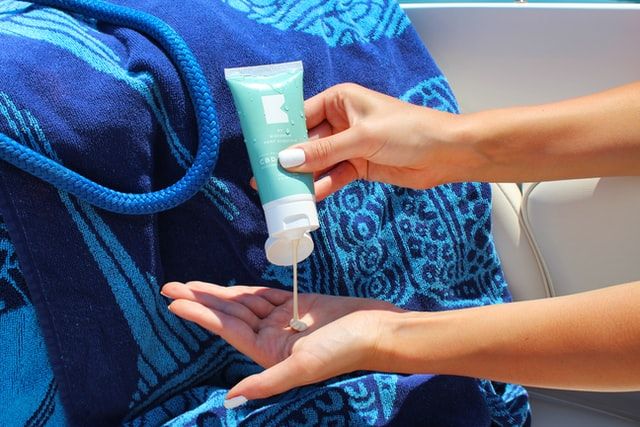
National Melanoma and Skin Cancer Awareness Month
As summer approaches, melanoma skin cancer may be far from your mind. However, before you step outside to bask in the sun’s warmth on the first nice day of the season, make sure that you’re taking the proper precautions to protect against this serious, potentially fatal, condition.
In recognition of May’s designation as National Melanoma and Skin Cancer Awareness Month, here’s what you need to know about melanoma, how to protect against this deadly skin cancer, and alternative options when it comes to getting a coveted tan this summer.
What Is Melanoma?
Melanoma is the deadliest skin cancer, causing one death an hour, every day, according to the Melanoma Research Alliance. Melanoma is caused by prolonged or frequent exposure to the sun’s harmful rays, or by a significant episode of high-intensity sun exposure. In fact, according to the American Academy of Dermatology (AAD), having five or more blistering sunburns between the ages of 15 and 20 years old can increase your chances of developing melanoma by 80 percent. While a certain amount of sun exposure is important for your body to create Vitamin D and melatonin, and to enhance your mood, it’s easy to get too big of a dose of sun and increase your risk of developing melanoma.
Who Is Most Likely to Get Melanoma?
While melanoma can affect anyone of any age, gender, or racial background, certain features make you more likely to develop melanoma.
These risk factors include:
- Having more than 50 moles, or large or unusual moles
- Having had non-melanoma skin cancer, a previous melanoma, or another type of cancer
- Having a family history of melanoma
- Having red or blonde hair
- Having blue or green eyes
- Having a history of frequent sun exposure or tanning bed activity
According to the Melanoma Research Alliance, melanoma is 20 times more common in people with white skin compared to those with black skin; however, people of color are more likely to die of melanoma because it tends to be diagnosed in later stages.
Identifying Melanoma
So, knowing the risk of melanoma, how can a person know if their mole is potentially a cancerous one? The first step is understanding the basic characteristics of a melanoma lesion. Dermatologists use a system known as “ABCDE” when identifying melanoma lesions. This mnemonic describes melanomas as lesions that are more likely to be asymmetrical, with irregular or poorly defined borders, varying color, and a diameter of greater than 6 mm. Melanomas are also known to evolve or change form, over time. Use this month as an opportunity to perform a skin self-examination—and have a dermatologist examine any new or changing moles urgently.
Preventing Melanoma
The most significant thing you can do to decrease your risk of developing melanoma is to protect yourself from the sun in some manner every time you go outside. Harmful UV rays can damage your skin all year long, even when it’s cloudy outside. Exposed skin should either be covered with sunscreen (experts recommend a water-resistant form of at least 30 SPF that offers protection against both UVA and UVB rays), or a fabric that blocks ultraviolet (UV) rays. Avoiding the sun, or staying in the shade, between the hours of 10 a.m. and 2 p.m. can also help you avoid the sun’s most intense UV rays each day. Melanoma has also been known to occur in the eyes, so wearing a hat and/or sunglasses can help decrease your risk, as well.
Alternative Tanning Options
If you desire a “sunkissed” look, you may think that a tanning bed or outdoor tanning without proper sun protection are your only options. However, these behaviors can dramatically increase your risk of developing melanoma skin cancer in the future. According to the AAD, using tanning beds before the age of 20 can increase a person’s chance of melanoma by 47 percent, and women under the age of 30 who use tanning beds are six times more likely to develop melanoma. Instead of relying on tanning beds or the sun’s harmful rays, consider using a sunless tanning option to achieve your desired skin shade, instead.
How to Learn More about Melanoma Skin Cancer
It can be intimidating to learn about melanoma and your potential vulnerability to this serious skin condition. However, knowing how to prevent melanoma using sunscreen and avoiding risky UV-related activities can help keep you safe this summer, and year-round. To learn more about melanoma, make sure to visit the American Academy of Dermatology.
Research and materials for this article were compiled, written, and distributed on behalf of the National Public Health Information Coalition. The views and opinions expressed in this blog are those of the various authors and do not necessarily reflect the official policy or position of the National Public Health Information Coalition or its members.
References:
- Melanoma statistics. https://www.curemelanoma.org/about-melanoma/melanoma-101/melanoma-statistics-2/#:~:text=Melanoma%20is%20the%20deadliest%20of,adults%20in%20the%20United%20States.
- Melanoma. https://www.aad.org/media/stats-melanoma
- How to apply self tanner. https://www.aad.org/public/everyday-care/skin-care-secrets/routine/apply-self-tanner

